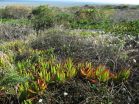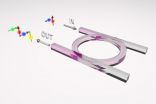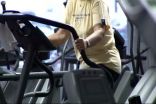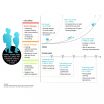(Press-News.org) New research suggests treatment in Australia and New Zealand for patients with sepsis is the best in the world.
The large-scale six-year study, led by the Australian and New Zealand Intensive Care Research Centre at Monash University, divided 1600 patients into two groups, who were admitted to emergency care with early stage sepsis from across more than 40 hospitals.
The first group of 796 patients received Early Goal Directed Therapy (EGDT), an aggressive treatment not currently used in Australia and New Zealand, which inserts a catheter into the jugular vein to monitor oxygen levels in the blood returning from the body to the heart.
The second group of 804 patients received the usual course of standard care given in Australia and New Zealand - a combination of rapid specialist-led care, powerful and immediate antibiotics and rapid resuscitation in either Emergency Departments or Intensive Care Units.
Previous studies found mortality rates for sepsis were as high as forty-six per cent, but were lowered to 30 per cent if EGDT was also used. Subsequently the therapy has been recommended globally and is endorsed by the Surviving Sepsis Campaign.
In contrast, the new study found that, in Australia and New Zealand, hospital mortality rates for both groups were close to 15 per cent – the lowest ever reported for this life threatening condition.
The Monash-led research, published in the New England Journal of Medicine, sheds doubt on the reported effectiveness of EGDT because researchers found it did not make any noticeable different to survival rates.
One of the lead researchers, Professor Rinaldo Bellomo, from the Australian and New Zealand Intensive Care Research Centre at Monash University's School of Public Health and Preventive Medicine said one of the reasons for the high survival rates could be down to Australia and New Zealand's healthcare systems.
"Australia and New Zealand have one of the longest and most scrutinised joint training programs in the world for doctors and nurses working in emergency and intensive care. Intensive care units routinely have one highly trained specialist nurse for each patient to maximise level of care and minimise cross infection and healthcare professionals have a reputation for collaboration and team work," he said.
"We don't know if these factors are responsible for the high survival rates, our next step is to carry out further work to determine this," Professor Bellomo said.
Sepsis, a fast-moving bloodstream infection that kills millions of people globally every year, is caused by the immune system's response to serious infection. In extreme cases, the body begins to shut down resulting in heart, lung, kidney and other organ failure. To combat the infection early diagnosis and intensive care are critical.
Introduced in 2001, EGDT is reported to have cut sepsis death rates by as much as a third. Used in many countries as a key strategy for septic shock admitted to emergency departments, a catheter is inserted into the jugular vein and slid near to the heart to monitor the level of oxygen in the blood. If oxygen levels are too low, transfusions are used to elevate it and drugs administered to make the heart beat faster
Professor Bellomo said the findings suggest it is time to review global sepsis treatment guidelines.
"Sepsis survival rates are one of the highest in Australia and New Zealand. We believe this is because of the standard of care, rather than the use of EDGT, an expensive and invasive procedure, which has never been widely used in either country," he said.
"In our study, mortality rates for both groups were the same, it was very clear that EDGT does not increase your chances of survival. Our study proves it is neither needed or beneficial," Professor Bellomo said.
INFORMATION:
The NHMRC-funded, Alfred Foundation-supported study led by Monash University involved researchers from every health care jurisdiction in Australia and New Zealand.
Published today in PLOS ONE, the study is the first in the world to show that it is possible to predict abstract judgments from brain waves, even though people were not conscious of making such judgments.
The study also increases our understanding of impulsive behaviours and how to regulate it.
It found that researchers could predict from participants' brain activity how exciting they found a particular image to be, and whether a particular image made them think more about the future or the present.
This is true even though the brain activity was recorded before ...
PROVIDENCE, R.I. [Brown University] — Dov Sax of Brown University and Jason Fridley of Syracuse University aren't proposing a novel idea to explain species invasiveness. In fact, Charles Darwin articulated it first. What's new about Sax and Fridley's "Evolutionary Imbalance Hypothesis" (EIH) is that they've tested it using quantifiable evidence and report in Global Ecology and Biogeography that the EIH works well.
The EIH idea is this: Species from regions with deep and diverse evolutionary histories are more likely to become successful invaders in regions with less deep, ...
Molecular studies of plants often depend on high-quantity and high-quality DNA extractions. This can be quite difficult in plants, however, due to a diversity of compounds and physical properties found in plants. "Tannins, tough fibrous material, and/or secondary compounds can interfere with DNA isolation," explains Dr. Thomas Givnish, principal investigator of a new study published by Jackson Moeller et al. in the October issue of Applications in Plant Sciences (available for free viewing at http://www.bioone.org/doi/pdf/10.3732/apps.1400048).
This is further complicated ...
WASHINGTON, Oct. 2, 2014—Commercial devices capable of encrypting information in unbreakable codes exist today, thanks to recent quantum optics advances, especially the generation of photon pairs—tiny entangled particles of light. Now, an international team of researchers led by professor Roberto Morandotti of INRS-EMT in Canada, is introducing a new method to achieve a different type of photon pair source that fits into the tiny space of a computer chip.
The team's method, which generates "mixed up" photon pairs from devices that are less than one square millimeter ...
VIDEO:
A new study suggests ibuprofen can make old lungs look young. In lab tests, daily ibuprofen lowered lung inflammation in elderly mice. The research and its implications are described by...
Click here for more information.
COLUMBUS, Ohio – New research shows that the lungs become more inflammatory with age and that ibuprofen can lower that inflammation.
In fact, immune cells from old mouse lungs fought tuberculosis bacteria as effectively as cells from young mice after ...
Grandparents can significantly influence parents' decisions to have additional children and the well-being of grandchildren, according to a recent study completed at the University of Eastern Finland.
In his PhD study, Dr Antti O. Tanskanen observed that grandparents' help with childcare and emotional support are linked to mothers' willingness to have a second or a third child. Furthermore, parents of small children who obtain support from paternal grandparents are also more likely to have additional children. The involvement of maternal grandparents in the lives of their ...
Bethesda, MD (Oct. 2, 2014) — Nonsteroidal anti-inflammatory drugs (NSAIDs) — such as ibuprofen and aspirin — increase one's risk of upper gastrointestinal bleeding. When taken in combination with other drugs, this risk is significantly higher, according to new research appearing in the October issue of Gastroenterology, the official journal of the American Gastroenterological Association.
"These findings may help clinicians tailor therapy to minimize upper gastrointestinal bleeding, and are especially valuable in elderly patients who are likely to use multiple drugs ...
The bond between humans and dogs is strong and ancient. From being the protector of the first herds in a faithful pet, dogs and people share many aspects of life. The relationship between the two species has been studied by psychologists, anthropologists, ethnologists and also by genetic and molecular biologists. In this sense, dogs are a great model for understanding the causes of human diseases, especially cancer.
Unlike other mammals used in research, dogs develop cancer spontaneously as humans do and cancer is the most common cause of death in this species. The dog ...
This news release is available in French, Spanish and German.
Low digital skills and competences among school pupils and the need to integrate effective use of information and communication technologies into teacher training are among the most pressing challenges faced by European school education today, according to a report published by the European Commission and the New Media Consortium, a US-based not-for-profit body bringing together experts in education technology. The first-ever Horizon Report Europe: 2014 Schools edition outlines the trends and technological ...
A study analysing the positive and negative effects of energy drinks on athletes has seen that, although in principle their sports performance was seen to improve by between 3% and 7%, there was also an increase in the frequency of insomnia, nervousness and the level of stimulation in the hours following competition.
The consumption of energy drinks has increased in recent years. In the case of athletes, the use of them before practising sport has also risen: more than 50% take them during training and even before competitions.
A four-year study carried out by experts ...





